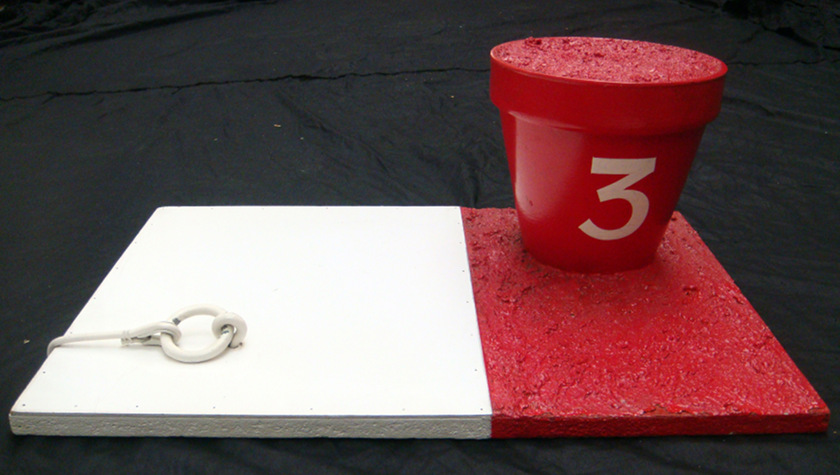Biographical Data
Born in Courbevoie, near Paris, in 1939. He lives and works in Paris. In 1962, Jean Pierre Raynaud, trained gardener, fills a flower pot with cement: “It was a radical thing to do and a way of declaring my artistic identity”. He quits his work to consecrate himself to art. His first individual exhibition takes place in 1965. In 1993 he represents France in the Venice Biennale.
Brief Chronology
During a first period, Jean Pierre Raynaud collects signs for the Sens interdits series. From 1964 to 1968 he uses red flower pots, pictures of mentally disturbed people, joints, luggage, etc. for his Psycho-objets. In 1965 he begins using tiles. He builds Maison (house), Abri semi-enterré, Objets-zéro, ceramic pieces made up of 15 x 15 cm white tiles. He uses this same motif in some public commissions he gets like the sixty-two stained glass windows for the Noirlac Cistercian Abbey, in 1976 or, in 1993, the French pavilion in the Venice Biennale. He keeps working in his Maison –a khaki blockhouse covered with ceramic– he forbids the entrance to it to anyone but him for twenty years, starting the 1st September 1988; however, he finally takes it apart in 1993. The flower pot is a recurrent motif in his work: in 1970 he produces 4000 flower pots, in 1980 he covers them with golden leaves, in 1985 he gives it gigantic proportions and inserts it in a greenhouse, and in 1998 he set it on a white marble star in front of the Musée national d’art moderne in Paris. He also creates installations with hospital beds, self portraits, coffins or weapons. Loneliness, hospitals and death are frequent subjects in his work. In 2000 his search is more existencial, he makes French flags on which he adds his portrait, “proclaiming it as a Raynaud object”, and fixes them on street walls during the presidencial campaign (La Force de l’idée).
P.L.T.

Sans titre, 1966, Assemblage: panolac, wood, metal, flower pot, cement, waste, paint, 23 x 65 x 45 cm / 9,0 x 25,5 x 17,7 in.